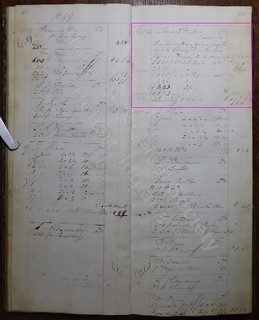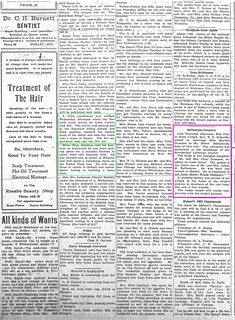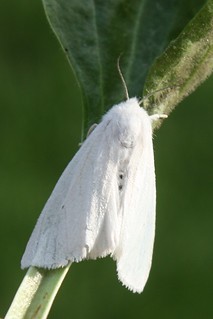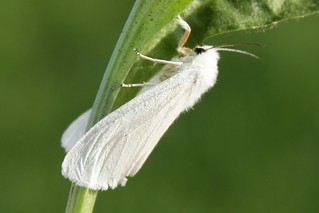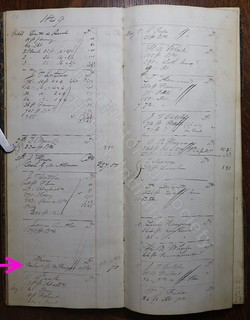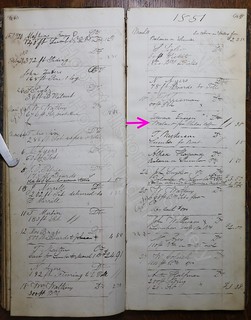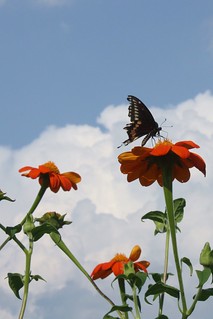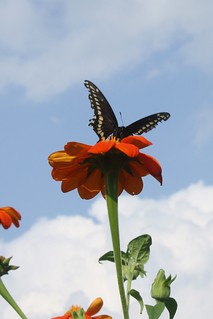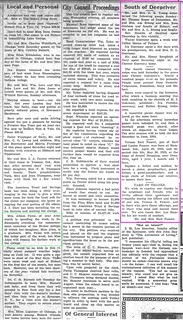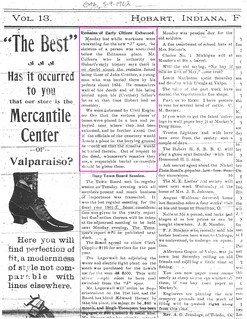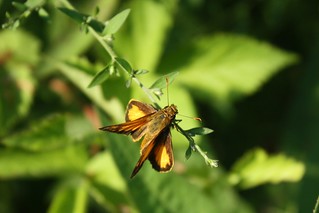In my post about the
Lake County courthouse, I said I was going to talk about John Premer. But first I want to talk about Fanny Premer.
She makes her first appearance on the first page of the Liverpool merchant's daybook: on May 15, 1840, she came to the store and bought nothing but finery, including a Dunstable bonnet (that would be imported from England, I believe).
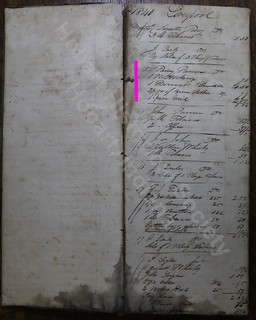 (Click on images to enlarge)
(Click on images to enlarge)
This image and the following image courtesy of the Hobart Historical Society.
She comes back over the next couple of weeks and buys gloves, stay laces (for lacing up her corset), and muslin.
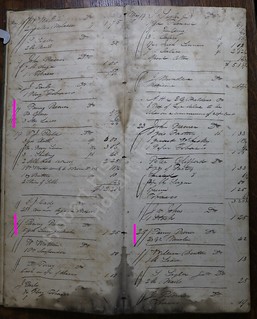
And so it goes, throughout the summer and into the autumn of 1840. She buys more dress fabric, and ribbon; several pairs of stockings; an artificial flower and a cape; a child's bonnet; ornamental combs; a pair of shoes. She buys one book (title unknown), and one pocket-knife. In September, along with a comb and thread, she buys ten cents' worth of raisins. But never does she buy mundane items like molasses, coffee, sugar, tobacco, whiskey — those purchases are made by John Premer. In December, Fanny buys another pair of shoes. Her last appearance is in January 1841, when she buys eight yards of calico.
Apparently Fanny was well dressed; that's one of the two things I know about her. The other thing is: on January 13, 1842, she married a man named Abraham Balts (
Indiana Marriage Collection). I can't find her (or him, for that matter) in any other record, anywhere. Was she related to John Premer? — seems likely, but I can't prove it. I can't put them in the same household in any census. Sometimes they came to the Liverpool store on the same day; sometimes not.
Now, as for John Premer, he is all over the ledgers (so far, I've indexed him 66 times as "John Premer," more than a dozen times, probably, as "J. Premer," and once as "Mr. Premer"), and he is only a little less elusive than Fanny in the official records.
John was born circa 1794 in Virginia. The earliest I can find him in Lake County is in the 1840 census:
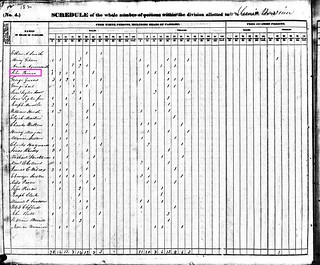 (Click on image to enlarge)
(Click on image to enlarge)
Image from Ancestry.com.
… At least, I think that's our John; with so little information given about him, it's hard to be sure. But we know from the ledgers he was in this area by 1840, and among his neighbors on the census page are the names of early local settlers, including Sigler, Zuvers, Hayward, and Merrill.
The 1850 Census is a little more informative.
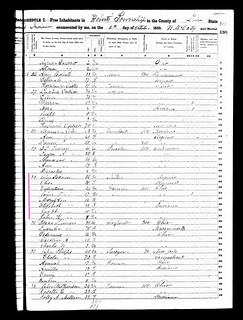 (Click on image to enlarge)
(Click on image to enlarge)
Image from Ancestry.com.
John gives his occupation as "miller" so perhaps he worked in one of George Earle's mills. One assumes that Olive is his wife and the younger folks are all his children … but there are
two boys named John, with different middle initials. That's odd.
Per the
Indiana Marriage Collection, John married Olive Sperling in 1847. The children in the 1850 census can't be children of that marriage; they must be from previous marriages. Perhaps that can explain the two young Johns — one of them is Olive's, and he was young enough when his mother remarried to take his new stepfather's surname.
From the same source we find another marriage involving a John Premer, in Lawrence County, Indiana in 1820, to Susan Burns (but per the 1850 census, they would have had to move to Ohio for the birth of Valentine and the next two children). The Ohio marriage records
[1] show John Premer marrying Mary Ann Vandermark in 1817 in Wayne County, which sounds more likely: it would account for the birthplace of the first three children, as well as the first daughter's being named for her mother. At the same place in 1836, John Premer married Elizabeth Caston. If the family then moved to Indiana, Elizabeth could be the mother of some of the children in the 1850 census.
I can't find any land belonging to John Premer (the eldest) in
Early Land Sales, Lake County, or on any plat map I have. His son(?), Valentine, did buy a few parcels: in 1850, he bought 80 acres northwest of Hobart from Jesse Albee (and later sold them to George Earle); in 1854, 80 acres just northwest of Hobart (also sold to George Earle the next year); and in 1854, 40 acres on the west side of S.R. 51 where it meets 61st Avenue. By the time of the
1874 Plat Map, there is no land under the Premer name.
In the
1860 Census, I can find only two Premers still in this area. The John born circa 1833 is a "farm laborer" on the farm of George and Margaret Guernsey in Ross Township; the younger John (born ca. 1841) is likewise employed by Jerry and Susan Vanness in Hobart Township.
[2] I cannot locate any other members of this family locally — or anywhere else, for that matter.
Two Premer boys, Jacob and one of the Johns, joined the military during the Civil War and lost their lives before it ended. The veterans' headstones to mark their graves (or at least memorialize them, if they were buried in some distant place where they died) were intended, as of 1888, to be located in Hobart …
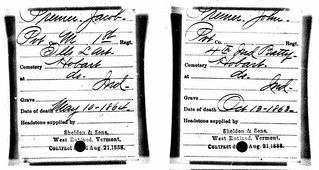 (Click on image to enlarge)
(Click on image to enlarge)
Ancestry.com. Headstones Provided for Deceased Union Civil War Veterans, 1861-1904 [database on-line]. Lehi, UT, USA: Ancestry.com Operations Inc, 2007. Original data: Card Records of Headstones Provided for Deceased Union Civil War Veterans, ca. 1879-ca. 1903; (National Archives Microfilm Publication M1845, 22 rolls); Records of the Office of the Quartermaster General, Record Group 92; National Archives, Washington, D.C.
… but both of them ended up in the Blake Cemetery in Porter County —
Jacob and
John.
_______________
[1] Ancestry.com. Ohio, County Marriage Records, 1774-1993 [database on-line]. Lehi, UT, USA: Ancestry.com Operations, Inc., 2016. Original data: Marriage Records. Ohio Marriages. Various Ohio County Courthouses.
[2] There is a John Premer born in Ohio circa 1838 working for a "hotel proprietor" named David Young (this would be the father of George Young) in Hobart Township. If he wasn't a relative who'd come out here from Ohio, he might have been the youngest John, accidentally counted twice in the census and understandably assigned an age a few years off from the correct one by whoever was talking to the enumerator.
